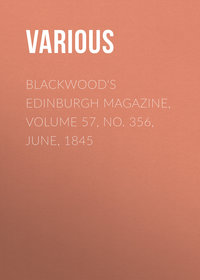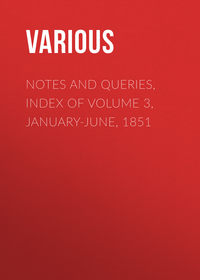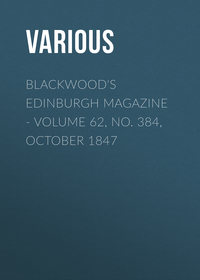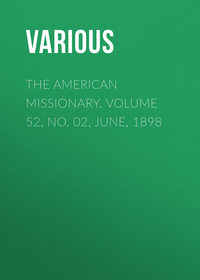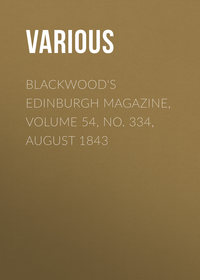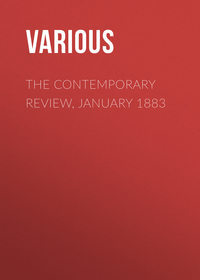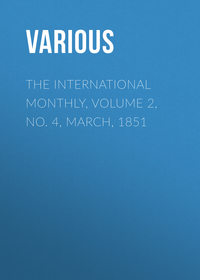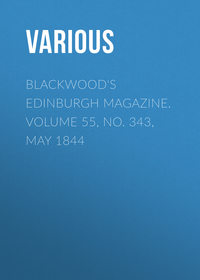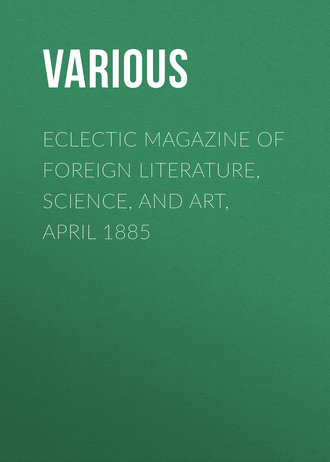 полная версия
полная версияEclectic Magazine of Foreign Literature, Science, and Art, April 1885
These data are sufficient to verify the statement that the Jews are endowed with better health and greater longevity than Christians. It will therefore be inferred that some peculiarity exists which gives them more power of resisting disease, and renders them less susceptible to its influence. In virtue of this property their constitution readily accommodates itself to the demands of a climate which may be too severe for other non-indigenous races. Take as an example the statistics of the town of Algiers in 1856. Crebassa gives the following particulars – Of Europeans there were 1,234 births and 1,553 deaths; of Mussulmans 331 births and 514 deaths; of Jews 211 births and 187 deaths. These numbers afford a remarkable illustration of the “survival of the fittest.”
Their unusual freedom from disease of particular kinds has been often noticed, and amounts nearly to immunity from certain prevalent maladies, such as those of the scrofulous and tuberculous type, which are answerable for about a fifth of the total mortality. Their comparative safety in the midst of destructive epidemics has often been the subject of comment, and was formerly used as evidence against them, on the malicious charge of disseminating disease. At the present day, and in consonance with the spirit of the age, the matter has come within the scope of the scientific inquirer, with the view of ascertaining the cause of this exceptional condition.
A peculiarity of this sort must lie in the nature of things in the distinctive character of their food, habits, and customs. Their more or less strict adherence to the requirements of the Mosaic law, and to the interpretation of it given in the Talmud, are familiar to all who come in contact with them. To this code we must therefore look for an explanation of the facts under review; and here it may be stated that no prominence is given to one set of laws over another. They all begin with the formula, “And the Lord spake unto Moses, saying,” thus making no difference in point of importance between the laws of worship and those of health. These latter, therefore, carried with them the sanctions of religion, and were as much a matter of obligation as any other religious duty. It will thus be easily seen how the interweaving of the several laws relating to health and worship had the effect of giving equal permanence to both, so that as long as the one was observed the other would be in force. Though many of the details might appear arbitrary, a fuller knowledge of sanitary science has revealed a meaning not recorded in the sacred text. Moses, who was versed in all the learning of the Egyptians, was evidently acquainted with the laws of health, which he embodied in his code under divine direction. Those who are firm believers in the inspiration of the Scriptures will have no difficulty in believing that principles, given by God for the preservation of the health of the Israelite in olden times, and to which he is still obedient with great apparent benefit, are likely to be beneficial in their effect on the general community. Truths of this kind are like the laws of nature, universally applicable. They never grow old by lapse of time or effete by force of circumstances.
This part of the Mosaic code is mainly concerned with details relating to food, cleanliness, the prevention of disease, and the disinfection of diseased persons and things. The Jews observe in eating flesh-food the great primary law, which was given to Noah after the Flood (Gen. ix. 4): “But the flesh with the life thereof, which is the blood thereof, shall ye not eat,” It was enforced in the Mosaic dispensation (Lev. xvii. 10), under the penalty of being cut off for disobedience, and in the Christian era was confirmed at the Council of Jerusalem (Acts xv. 20), when the Apostle James, as president, gave sentence that the Gentiles who are turned to God should abstain from blood. To this day the animal (whether beast or bird) is killed with a sharp knife in such a way that the large blood vessels in the neck discharge the blood most freely, and so drain the flesh to the utmost extent possible, and as an additional precaution the veins, which in certain places are difficult to empty, are removed before the part can be used as food; so that it would appear every needful measure is adopted to prevent the ingestion of the forbidden fluid. On this account game that is shot is not eaten by the orthodox Jew, as the blood is retained by that mode of death.
Before the slain animal is pronounced kosher, or fit for food, a careful search is made by experts for any evidence of disease. These men have to satisfy the Shechita Board, which takes cognisance of these matters, that they have a competent knowledge of morbid structures before being authorised to affix the official seal, without which no meat is considered wholesome. That this practice is far from being unnecessary may be gathered from the fact that in a recent half-yearly report presented to the board the following particulars occur: – Oxen slain, 12,473, kosher, 7,649; calves slain, 2,146, kosher, 1,569; sheep slain, 23,022, kosher, 14,580. These numbers show that out of 37 beasts slain 14 were rejected as unsound, and not allowed to be eaten by the Jew. The less-favored Christian, not being under such dietary restrictions, would have no hesitation in buying and consuming this condemned meat. It is even alleged that a larger proportion of diseased animals than is here stated is exposed for sale in the Metropolitan Meat Market, and used as food by purchasers of all classes. Whether this be so or not, the fact remains that the Jewish portion of the community have the sole benefit of arrangements specially designed for the maintenance of health. This state of things demands urgent attention, and has surely a claim prior to many other subjects which occupy the time of our legislators.
The Mosaic law, in forbidding the use of blood as food, gives as the reason that the blood is the life. It follows, therefore, if the animal be unhealthy its blood may be regarded as unhealthy. But as the blood may be diseased without external or even internal evidence such as is open to common observation, the total prohibition of it obviates the risk that might otherwise be incurred.
Modern science has discovered in the circulation of diseased animals microscopic organisms of different forms, each characteristic of some particular disease. They are parasitic in their nature, growing and multiplying in the living being, though they are capable of preserving their vitality outside the body. Some, like the bacillus, which is supposed to cause tuberculosis, may even be dried without losing their vital properties, and on entering the system be able to produce the disease proper to them. Others will develop in dead organic substances, but increase more abundantly in living structures. They are very plentiful in the atmosphere of certain localities, and settling on exposed wounded surfaces, or finding their way into the lungs and effecting a lodgment in the blood and tissues, they generate, each after its kind, specific infective diseases. When the blood becomes impregnated by any special organism, a drop may suffice to propagate the disease by inoculation in another animal. The mode of entrance of these morbid germs may be by inhalation, by inoculation, and by the ingestion of poisonous particles with the food. Any person living in unhygienic circumstances, and whose system is from any cause in a condition suited for the reception of these organisms, cannot safely eat meat which may contain them in the blood. In the splenic fever of cattle, for instance, which is communicable to man, these germs are exceedingly numerous, and the same may be said of the other specific febrile diseases. Eventually there is a deposit of morbid material in the tissues, where the process of development goes on till a great change in the once healthy structures is effected.
With the light derived from recent investigation we are able to understand the wisdom and foresight of the Mosaic injunction as well as appreciate its supreme importance. The Jew, like the Christian, is exposed to the inroads of disease when he breathes an infected atmosphere and eats tainted food, provided he is susceptible at the time to the morbific influence, but he is protected by a dietary rule at the point where the Christian is in danger. The Jew who conforms to the law of Moses in this particular must have a better chance of escaping the ravages of epidemics than those who are not bound by these restrictions. This hygienic maxim goes far to explain the comparative freedom of the Jewish race from the large class of blood diseases.
The examination of the carcass is also necessary with the view of determining the sound or unsound condition of the meat. At one time it was doubted that the complaints from which animals suffer could be communicated by eating their flesh, but the evidence of eminent authorities has definitely settled the question. Such bovine diseases as the several varieties of anthrax, the foot and mouth disease, and especially tuberculosis, are now believed to be transmissible through ingested meat. It has been proved that the pig fed with tuberculous flesh becomes itself tuberculous, and the inference is fair that man might acquire the disease if subjected to the same ordeal. This last disease is very common amongst animals, and is now recognised as identical with that which is so fatal to the human race. It is considered highly probable that the widespread mortality caused by this malady is due in a great degree to the consumption of the milk and meat of tuberculous animals. That the milk supply should be contaminated is a very serious affair for the young, who are chiefly fed on it. The regular inspection of all dairies by skilled officials is imperatively necessary to ward off a terrible and growing evil; just as a similar inspection of slaughter-houses is demanded in the interests of the meat-eating portion of the community.
Temperance is a noteworthy feature in the habits of the Jews. Their moderation in the use of alcoholic drinks is deserving of the highest commendation. Very rarely are they rendered unfit for business by over-indulgence in this debasing vice. In no class of Jewish society is excessive drinking practised. The poorest, in their persons, families, and homes, present a marked contrast to their Christian neighbors in the same social position. The stamp on the drunkard’s face is very seldom seen on the countenance of a Jew. He is not to be found at the bar of a public-house, or hanging idly about its doors with drunken associates. His house is more attractive by reason of the thrift that forms the groundwork of his character. Domestic broils, so common an incident in the life of the hard-drinking poor, are most unusual. When work is entrusted to him insobriety does not interfere with the due and proper performance of it, hence his industry meets with its reward in the improvement of his circumstances. This habit of temperance amid abounding drunkenness, more or less excessive, is probably one of the causes of the protection afforded to him during the prevalence of some epidemic diseases, such as typhus, cholera, and other infectious fevers. His comparative freedom from the ravages of these terrible complaints has been chronicled by observers, both mediæval and modern, and is now a subject of common remark. The latest instance of this immunity is furnished by the records of the deaths from cholera in the south of France, where it is affirmed that out of a considerable Jewish population in the infected districts only seven fell victims to the disease, a fact which ought to receive more than a passing notice in the interests of humanity.
Another point that may be mentioned is the provision made by the Jewish Board of Guardians for the indigent poor. It has been said that no known Jew is allowed to die in a workhouse. When poverty, or sickness involving the loss of his livelihood, occurs, charity steps in and bestows the help which places him above want, and tides him over his bodily or pecuniary distress. The mother is also seasonably provided with medical and other comforts when her pressing need is greatest. In this way they are saved from the diseases incidental to lack of food, and after an attack of illness are sooner restored to health than the majority of the poor, who linger on in a state of convalescence little better than the ailment itself, and often sink into permanent bad health from the scanty supply of the necessary nourishment which their exhausted frames require.
In enumerating the causes which have made the Jewish people so strong and vigorous, particular mention must be made of their observance of the Sabbath. This day was appointed for the double purpose of securing a set portion of time for the worship of God, and of affording rest to the body wearied with its six days’ labors. The secularising of this holy day in the history of the French nation has demonstrated the need of a day of rest and the wisdom of its institution by a merciful Creator, even before there was a man to till the ground. Obedience to this primeval law, renewed amid the thunders of Sinai, and repeated on many subsequent occasions by Moses and the prophets, is still held by the Jews to be as strictly binding on them as any other religious obligation. Of the physical blessings derivable from keeping the Sabbath day they have had the benefit for many long centuries when other nations were sunk in heathenism and ignorant of the divine ordinance made to lighten their labors and recruit their strength. In Christian countries where the Sunday is kept sacred, or observed as a holiday, another day of rest in addition to their own Sabbath is obtained, thus fortifying them against the crushing toil and nervous strain of modern life. The loss accruing from this enforced abstinence from business worries is more than counter-balanced by the gain in nerve power with which periodical cessation from any harassing employment is compensated. This is doubtless one of the factors which have helped to invigorate both mind and body, and to develop in them those high qualities for which they are justly distinguished.
To sum up – the longevity of the Jew is an acknowledged fact. In his surroundings he is on a par with his Christian neighbor. If the locality in which he dwells is unhealthy, he also suffers, but to a less degree. If the climate is ungenial, its influence tells on him too, but with less injurious effect. His vigorous health enables him to resist the onset of disease to which others succumb. These advantages are for the most part owing to his food, his temperate habits, and the care taken of him in sickness and poverty. No doubt he is specially fortunate in inheriting a constitution which has been built up by attention, for many centuries, to hygienic details. His meat is drained of blood, so that by that means morbid germs are not likely to be conveyed into his system. It is also most carefully inspected so as to prevent the consumption of what is unsound, hence his comparative immunity from scrofulous and tuberculous forms of disease.
How can the benefits which the Jews enjoy be shared by other races? In regard to food, whatever prejudice may stand in the way of draining the blood from the animal, it ought surely to be done when there is the least suspicion of unhealthy symptoms; but there can be no doubt about the urgent necessity for a strict supervision of our meat markets, so as to prevent the sale of diseased food. Legislation ought to make such regulations as will render impossible the continuance of an evil which, by oversight or otherwise, is dangerous to the general health. Temperance is a virtue within the reach of everybody, and is now widely practised by all classes, and the gain in improved health will soon be apparent in the lessening of ailments due to drunkenness. Charity is as much the duty of the Christian as of the Jew, and it is a dishonor to the Master whom the former professes to serve if he shuts up his bowels of compassion when the poor, who have always claims upon him, call in vain for the needed help. They ought never to be allowed to languish in sickness and poverty till the friendly hand of death brings a grateful relief to all their troubles.
The Bible is regarded by some scientists as an old-fashioned book; but its teaching in relation to hygiene, even they will confess, has not become antiquated. It must be credited with having anticipated and recorded for our instruction and profit doctrines which are now accepted as beyond dispute in this department of knowledge. In the Mosaic law are preserved sanitary rules, the habitual observance of which by the Jew, from generation to generation, has made him superior to all other races in respect of health and longevity. —Leisure Hour.
THE HITTITES 26
BY ISAAC TAYLOR
The reconstruction, from newly exhumed monuments, of the history of the East, has been the great work of the present century. The startling revelations arising from the decipherment of the Egyptian records were followed by results, still more surprising, afforded by the buried cities of Assyria and Babylonia, and by glimpses into the prehistoric life of Greece obtained from the excavations of Dr. Schliemann on the sites of Troy and Mycenæ. If any one will take the trouble to look into such a book as Rollin’s “Ancient History,” and compare it with Duncker’s “History of Antiquity,” or with the useful series of little volumes published by the Christian Knowledge Society under the title of “Ancient History from the Monuments,” it will be possible to estimate the completeness of the reconstruction of our knowledge. Thus the legendary story of Sesostris, as recorded by Herodotus, has given place to the authentic history of the reigns of the conquering monarchs of the New Empire, Thothmes III., Seti I., and Rameses II., while the Greek romance of Sardanapalus is replaced by the contemporary annals of Assurbanipal; and, more wonderful than all, we discover that Semiramis herself was no mortal Queen of Babylon, but the celestial Queen of the Heavenly Host, the planet Venus, the morning star as she journeys from her eastern realm, the evening star as she passes onward to the west in search of her lost spouse the sun, and to be identified with the Babylonian goddess Istar, the Ashtaroth of the Bible, whose rationalized myth was handed down by Ctesias as sober history.
To these marvellous reconstructions another of hardly less interest and importance must now be added. The most notable archæological achievement of the last ten years has been the recovery and installation of the Hittite Empire as one of the earliest and most powerful of the great Oriental monarchies. Dr. Wright, in the opportune volume whose title stands at the head of this notice, has established a claim to have rescued from probable destruction some of the most important Hittite inscriptions; to have been the first to suggest the Hittite origin of the inscribed stones from Hamath whose discovery in 1872 excited so much speculation; and has now added to our obligations by placing before the world in a convenient form nearly the whole of the available materials bearing on the question of Hittite history and civilization.
Our readers will probably remember a signed article on the Hittites, from the pen of Dr. Wright, which appeared in this Review in 1882. This article has been expanded by its author into a goodly volume, and has been enriched with considerable additions of new and valuable material which bring it well up to the present standard of knowledge. Among these additions are facsimiles of the principal Hittite inscriptions, most of which have already appeared in the transactions of the Society of Biblical Archæology, and are now revised by Mr. Rylands; while Sir C. Wilson and Captain Conder have contributed a useful map indicating the sites where Hittite monuments have been found; and Professor Sayce adds a valuable appendix containing the results of his latest researches as to the decipherment of the Hittite script.
Till within the last twenty years all men had been used to think of the Hittites as an obscure Canaanitish tribe, of much the same importance as the Hivites or the Perizzites, with whom it was the custom to class them. It is true that if read between the lines, as we are now able to read it, the Biblical narrative indicated that while other Canaanitish tribes were of small power and importance, and were soon exterminated or absorbed into the Hebrew nationality, the Hittites stood on altogether another footing. The Hittites are the first and the last of these tribes to appear on the scene. As early as the time of Abraham we find them lords of the soil at Hebron; and in the time of Solomon, and even of Elisha, they are a mighty people, inhabiting a region to the north of Palestine, and distinguished by the possession of numerous war chariots, then the chief sign of military power. Though we are now able to perceive that this is the true signification of the references to them in the old Testament, yet it was from the newly recovered monuments of Egypt and Assyria that the facts were actually gleaned, and it was shown that for more than a thousand years the Hittite power was comparable to that of Assyria and Egypt.
It is only by slow degrees that this result has been established. The first light came from Abusimbel, in Nubia, midway between the first and second cataracts of the Nile, where Rameses II., the most magnificent of the Egyptian kings, at a time when the Hebrews were still toiling in Egyptian bondage, caused a vast precipice of rock to be carved into a stupendous temple-cave, to whose walls he committed the annals of his reign and the records of his distant campaigns. On one of the walls of this temple is pictured a splendid battle scene, occupying a space of 57 feet by 24, and containing upwards of 1100 figures. This represents, as we learn from the hieroglyphic explanation, the great battle of Kadesh, fought with the “vile people of the Kheta” – a battle which also forms the theme of the poem of Pentaur, the oldest epic in the world, still extant in a papyrus now preserved in the British Museum. In spite of the grandiloquent boasts of these records, we gather that the battle was indecisive; that Rameses had to retire from the siege of Kadesh, narrowly escaping with his life; the campaign being ended by the conclusion of a treaty on equal terms with the King of the Kheta – a treaty which was followed a year later, by the espousal by Rameses of a daughter of the hostile king.
About twenty years ago it was suggested by De Rougé that this powerful nation of the Kheta might probably be identified with the Khittim, or Hittites, of the Old Testament; and this conclusion, though never accepted by some eminent Egyptologists, such as Chabas and Ebers, gradually won its way into favor, and has been recently confirmed by Captain Conder’s identification of the site of Kadesh, where the battle depicted on the wall at Abusimbel was fought. From other inscriptions we learn that for five hundred years the Kheta resisted with varying success the attacks of the terrible conquerors of the eighteenth and nineteenth dynasties, their power remaining to the last substantially unshaken. The story is now taken up by the Assyrian records, which prove that from the time of Sargon of Accad – who must be assigned to the nineteenth century B.C., if not to a much earlier period – down to the reigns of Tiglath Pileser I. (B.C., 1130), and for four hundred years afterwards, till the reigns of Assur-nazir-pal and Shalmanezer II., the Khatti of Hamath and Carchemish were the most formidable opponents of the rising power of Assyria, their resistance being only brought to a close by the defeat of their King Pisiris, and the capture of Carchemish, their capital, in 717 B.C., by Sargon II., the king who also destroyed the monarchy of Israel by the capture of Samaria.
It seemed strange that no monuments should have been discovered belonging to a people powerful enough to withstand for twelve centuries the assaults of Egypt and Assyria. At last, in 1872, certain inscriptions from Hamath on the Orontes, in a hieroglyphic picture-writing of a hitherto unknown character, were published in Burton and Drake’s “Unexplored Syria.” Dr. Wright, in 1874, published an article in “The British and Foreign Evangelical Review,” suggesting that these monuments were in reality records of the Hittite race. This conjecture, though much ridiculed at the time, has gradually fought its way to universal acceptance, mainly owing to the skilful advocacy of Professor Sayce, who, in ignorance of Dr. Wright’s suggestion, arrived independently at the same conclusion, and shortly afterwards identified a monument at Karabel, near Ephesus, described by Herodotus as a figure of Sesostris, as the effigy of a Hittite king. Subsequent discoveries of Hittite monuments in other parts of Asia Minor, taken in conjunction with the Biblical notices, and the Egyptian and Assyrian records, prove that at some remote period a great Hittite empire must have extended from Hebron to the Black Sea, and from the Euphrates to the Ægean; while it is now generally admitted that, to some extent, the art, the science, and the religion of prehistoric Greece must have been derived ultimately from Babylon, having been transmitted, first to the Hittite city of Carchemish, and thence to Lydia, through the Hittite realm in Asia Minor. It is now believed by many scholars of repute that the Ephesian Artemis must be identified with the great Hittite goddess Atargatis, and ultimately with the Babylonian Istar; that the Niobe of Homer, whose effigy may still be seen on Mount Sipylus, near Smyrna, was an image of Atargatis, whose armed priestesses gave rise to the Greek legend of the Amazons, a nation of female warriors; that the Euboic silver standard was based upon the mina of Carchemish; and that in all probability the characters found on Trojan whorls by Schliemann, as well as certain anomalous letters in the Lycian alphabet, and even the mysterious Cypriote syllabary itself were simply cursive forms descended from the Hittite hieroglyphs used in the inscriptions on the pseudo-Niobe and the pseudo-Sesostris in Lydia, and pictured on the stones obtained by Dr. Wright from Hamath, and by Mr. George Smith from Carchemish.




